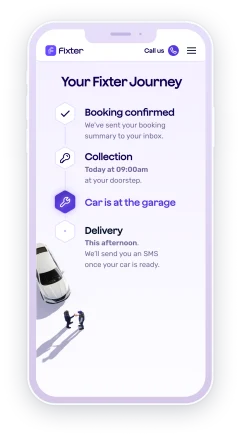Hearing a knocking noise when you turn your car can be both puzzling and concerning. This sound might indicate a variety of potential issues, each with its own set of causes and solutions. From worn-out suspension components to issues with the steering system, the origins of this noise can vary widely. Understanding these common reasons can help you avoid further damage and ensure your vehicle remains safe and reliable on the road. In this guide, we will delve into the typical causes of knocking sounds during turns and what steps you can take to address them confidently.

Causes of Knocking Noise
Worn Out CV Joints
Constant Velocity (CV) joints are crucial components that connect your car's transmission to the wheels. They allow for smooth rotation of the wheels, even as they follow the suspension's movement. Over time, CV joints can wear out, particularly in vehicles with high mileage. When these joints become damaged or worn, they might produce a distinctive knocking noise during turns. This is due to the joint's inability to maintain a constant velocity, resulting in uneven movements.
It's important to address worn CV joints promptly. Ignoring the problem could lead to more significant damage, potentially resulting in the joint failing completely. Symptoms of worn CV joints include grease on the wheel or inside of the tyre, as well as vibrations during driving. To resolve this issue, the joints typically need to be replaced. Regular maintenance and inspection can help identify CV joint wear early, preventing unexpected breakdowns.
Loose Suspension Parts
The suspension system in a car is designed to absorb shocks from the road and keep the vehicle stable. When parts within this system become loose, it can lead to knocking noises during turns. Components like struts, shock absorbers, or control arms may develop slack over time due to normal wear and tear. This looseness allows parts to move excessively, creating noise as they knock against other components or the vehicle's body.
Addressing loose suspension parts is essential for maintaining your car's handling and safety. If you suspect such an issue, a thorough inspection is necessary to identify which parts are affected. Tightening or replacing these components can resolve the knocking noise and restore your car's smooth operation. Regular checks and maintenance can prevent suspension issues from developing, ensuring that your vehicle remains responsive and comfortable to drive, even on uneven surfaces or during sharp turns.
Faulty Steering System
A faulty steering system can also be a culprit behind knocking noises when turning. Components within the steering mechanism, such as the tie rods, ball joints, or steering rack, can wear out or become damaged over time. This wear can lead to play or looseness in the steering assembly, causing parts to clatter against each other during operation. Such issues may result in not only knocking sounds but also a reduction in steering precision and control.
It's crucial to address steering system issues promptly, as they directly affect the vehicle's handling and safety. Regular inspections are key to identifying potential problems early. If you notice knocking noises or feel play in the steering wheel, it might be time for a professional assessment. Repairs might include tightening, adjusting, or replacing the affected parts. Keeping your steering system in good condition ensures smoother, safer driving and helps prevent more costly repairs in the future.
Diagnosing the Problem
Listening for Specific Sounds
Identifying the exact cause of a knocking noise when turning involves careful listening and observation. Different sounds can indicate different issues, so it's important to pay attention to the characteristics of the noise. For instance, a rhythmic, repetitive knocking might suggest a problem with the CV joints, whereas a more intermittent clunking could point to loose suspension parts.
Try to note whether the sound is more pronounced during left or right turns, and if it occurs at specific speeds or road conditions. These details can help narrow down the potential causes. Additionally, consider whether the noise varies with the degree of steering or if it's accompanied by other symptoms like vibrations or changes in handling.
By listening closely, you can gather valuable information that aids in diagnosing the issue. Armed with this data, a mechanic will be better equipped to pinpoint and resolve the underlying problem, ensuring your vehicle remains safe and reliable.
Visual Inspection Techniques
Performing a visual inspection is a practical step in diagnosing knocking noises when turning your car. Begin by checking the wheels and tyres for any visible damage or foreign objects lodged in the tread, as these can sometimes cause unusual noises. Next, examine the suspension components such as the struts, shocks, and control arms for signs of wear, cracks, or looseness.
Look for any leakage around the CV joints, as this could indicate a damaged boot, which is a common precursor to joint failure. Additionally, inspect the steering components, including the tie rods and steering rack, for signs of wear or damage.
Ensure that all nuts and bolts are securely tightened, as loose fittings can lead to noise and instability. Conducting these checks in a well-lit environment, possibly with the aid of a flashlight, can help identify issues that might not be immediately apparent. This visual inspection can provide crucial insights, allowing for more targeted repairs.
Professional Diagnostic Tools
When diagnosing the source of a knocking noise while turning, professional diagnostic tools can be invaluable. Mechanics often use specialised equipment to identify issues that may not be visible to the naked eye. For instance, electronic stethoscopes help pinpoint the exact location of a noise by amplifying sounds, making it easier to isolate the problem area.
Additionally, mechanics might use computer diagnostics to check for fault codes in the vehicle's electronic systems. These codes can provide clues about underlying mechanical or electronic issues that could be contributing to the noise.
Wheel alignment tools can also be used to check for misalignments that might affect handling and cause noises. In complex cases, mechanics could utilise imaging tools like borescopes to inspect internal parts without dismantling components. By leveraging these professional diagnostic tools, mechanics can conduct a thorough analysis, leading to accurate identification and timely resolution of the problem, ensuring peace of mind for the vehicle owner.
Solutions and Repairs
Replacing CV Joints
Replacing CV joints is often necessary when they become worn or damaged, causing knocking noises during turns. This task typically involves removing the worn joint and fitting a new one. The process starts with lifting the vehicle and removing the wheel associated with the faulty joint. Next, the axle nut and relevant suspension components are detached to access the CV joint.
Once exposed, the old joint is carefully removed and replaced with a new one. It's crucial to ensure the new CV joint is properly greased and securely fitted to prevent future issues. After installation, all components are reassembled, and the wheel is replaced.
While replacing CV joints can be a DIY task for those with mechanical experience, it is often best left to professionals due to the complexity involved. Proper installation ensures that the vehicle handles smoothly and eliminates the knocking noise, restoring confidence in the car's performance and safety.
Tightening Loose Components
Addressing loose components is a straightforward solution that can effectively eliminate knocking noises when turning. Start by identifying which parts of the suspension or steering system are loose. This might include components like bolts, nuts, or brackets in the suspension, or elements of the steering assembly like tie rods or ball joints.
Use the appropriate tools, such as a torque wrench, to ensure that all fasteners are tightened to the manufacturer's specifications. Over-tightening can be as problematic as loose fittings, leading to potential damage or performance issues. It's important to check the vehicle's manual or consult with a professional to understand the correct torque settings for each component.
Regularly inspecting and tightening loose components as part of routine maintenance can prevent these issues from arising. By taking these steps, you ensure that your vehicle's handling remains stable and secure, reducing noise and enhancing the overall driving experience. This simple yet effective measure promotes both safety and reliability.
Steering System Adjustments
Adjustments to the steering system can resolve knocking noises and improve vehicle handling. The process begins with a thorough inspection to identify any points of excessive play or misalignment within the steering assembly. Common areas requiring adjustment include the tie rods, steering rack, and steering column.
Once the problematic component is identified, adjustments are made using specialised tools. For example, tie rod ends can be adjusted to correct alignment issues, ensuring the wheels are properly oriented. If the steering rack is the source of the noise, tightening or realignment may be necessary to eliminate unwanted movement.
Professional assistance is often recommended for steering adjustments, as precise calibration is crucial for maintaining vehicle safety and performance. Regular maintenance checks can help catch steering issues early, preventing them from developing into more serious problems. By ensuring the steering system is correctly adjusted, drivers can enjoy a smoother, quieter driving experience with improved control and confidence on the road.
Preventative Maintenance Tips
Regular Vehicle Inspections
Regular vehicle inspections are vital for maintaining the health of your car and preventing issues like knocking noises when turning. These inspections allow for the early detection of wear and tear, giving you the opportunity to address minor problems before they escalate into major repairs. Key areas to focus on during inspections include the suspension, steering system, and CV joints, as these are common sources of noise.
During an inspection, check for signs of wear such as frayed belts, cracked hoses, or leaking fluids. Ensure that all components are tightly secured and that there are no unusual noises when the vehicle is in operation.
It's advisable to follow the inspection schedule recommended in your vehicle's manual, which typically suggests checks every 10,000 to 15,000 miles or annually. By adhering to a regular inspection routine, you can maintain your vehicle's performance and safety, ultimately extending its lifespan and ensuring a more reliable driving experience.
Proper Lubrication Practices
Proper lubrication is essential for the smooth operation of your vehicle and plays a critical role in preventing knocking noises and other mechanical issues. Lubrication reduces friction between moving parts, minimising wear and tear and extending the lifespan of components like CV joints and suspension parts.
To maintain proper lubrication, regularly check and top up essential fluids such as engine oil, transmission fluid, and power steering fluid. Additionally, components that require grease, such as certain types of suspension and steering joints, should be inspected and re-greased as needed.
Using the correct type and grade of lubricant is crucial, so always refer to your vehicle's manual for guidance. Neglecting lubrication can lead to increased friction, overheating, and eventual failure of parts, resulting in costly repairs. By following proper lubrication practices, you ensure that your vehicle operates efficiently and quietly, enhancing performance and reliability over time. Regular maintenance checks will help keep your car in optimal condition.
Timely Repairs and Replacements
Timely repairs and replacements are crucial in maintaining your vehicle's performance and preventing the development of knocking noises. Addressing issues as soon as they arise can prevent minor problems from turning into costly repairs. For instance, if you detect a worn CV joint or a loose suspension component, replacing them promptly can prevent further damage to related parts.
Regular maintenance checks help identify when components are nearing the end of their useful life. Pay attention to any changes in your vehicle's handling, sounds, or performance, as these can be early indicators of potential issues. Prioritise repairs for components that are integral to driving safety, such as the steering and braking systems.
By adopting a proactive approach to vehicle maintenance, you ensure that your car remains reliable and safe. This not only enhances your driving experience but also helps maintain the vehicle's value over time. Timely action can significantly reduce the risk of breakdowns and the inconvenience of emergency repairs.








